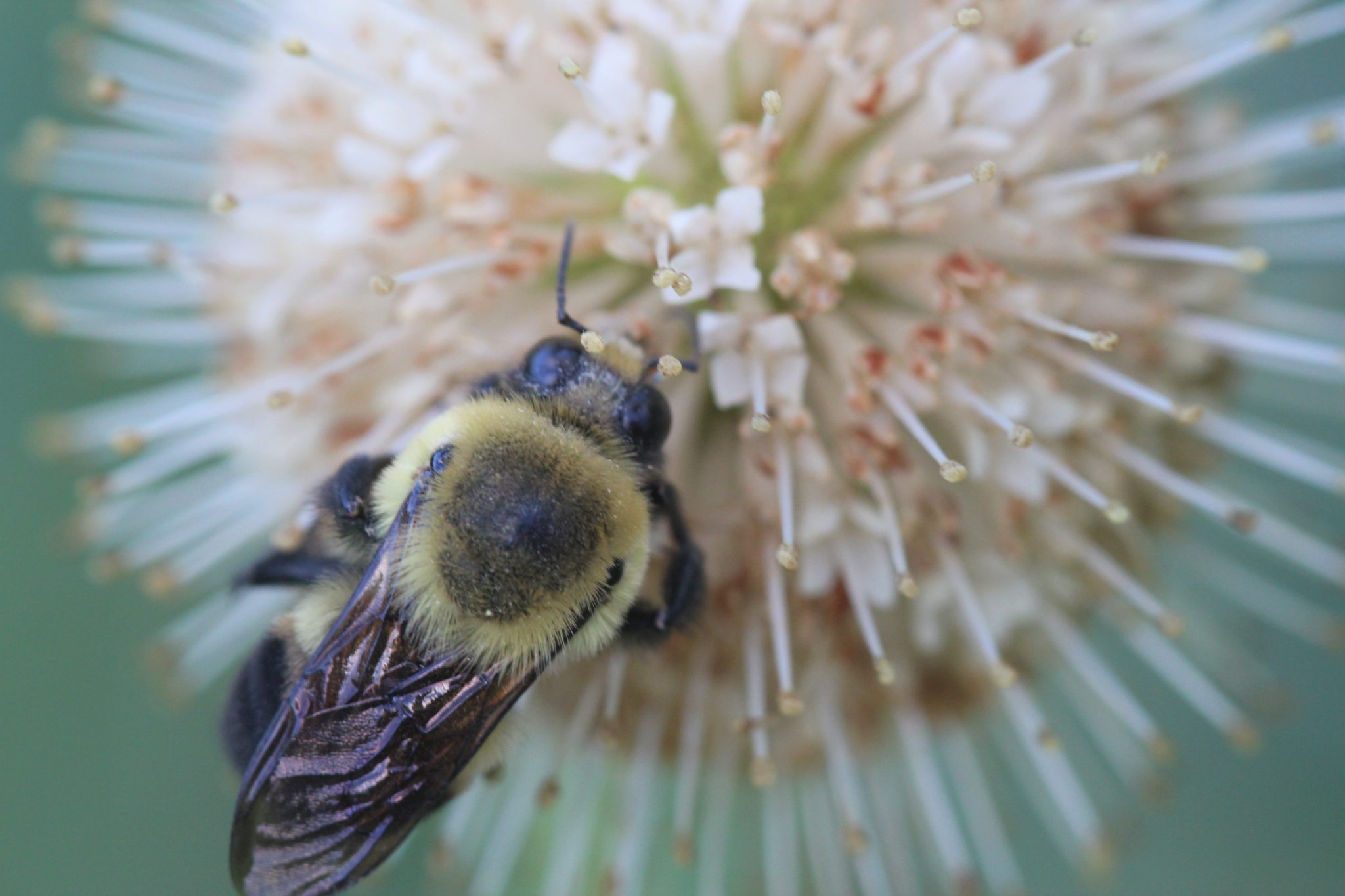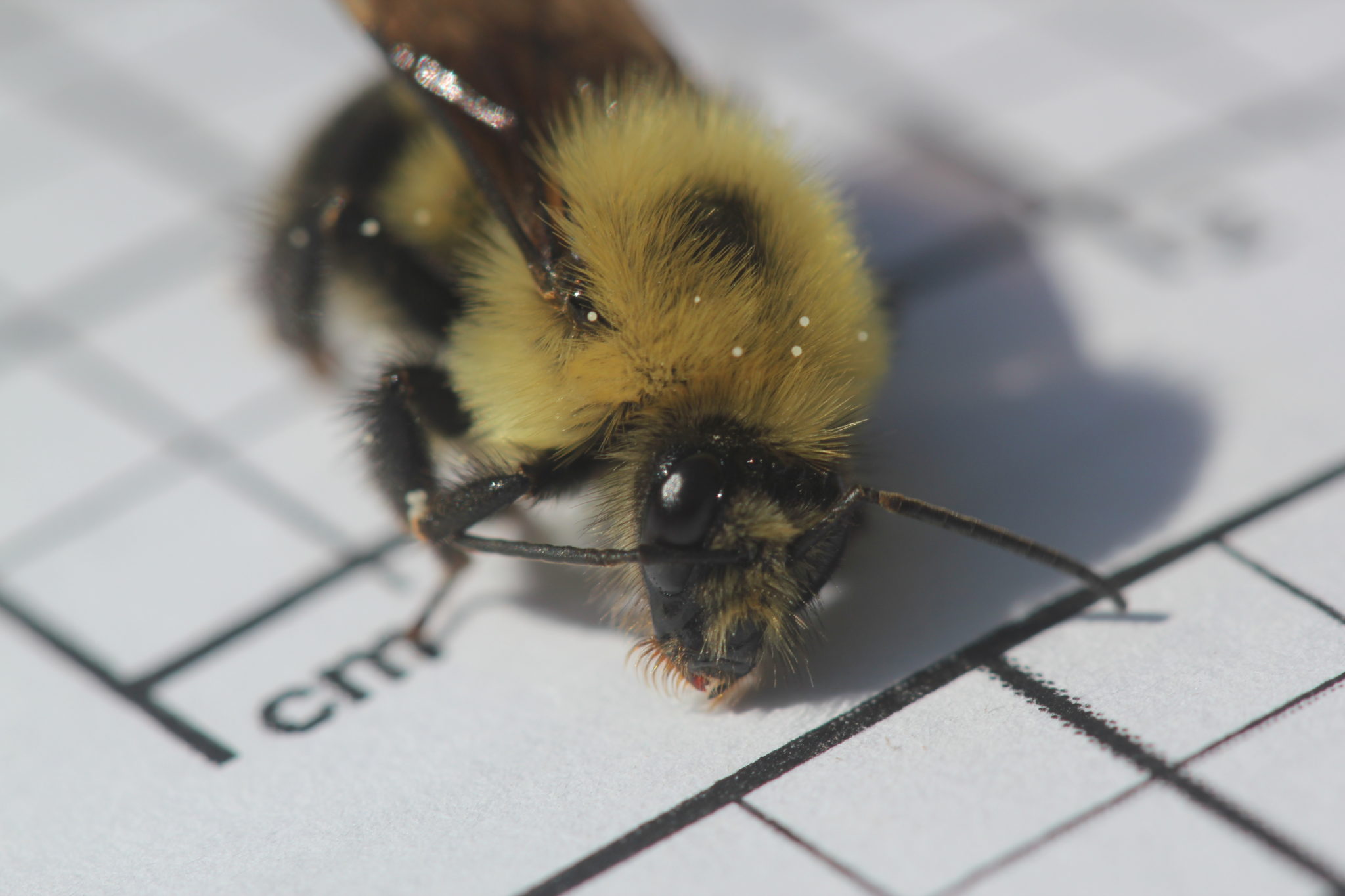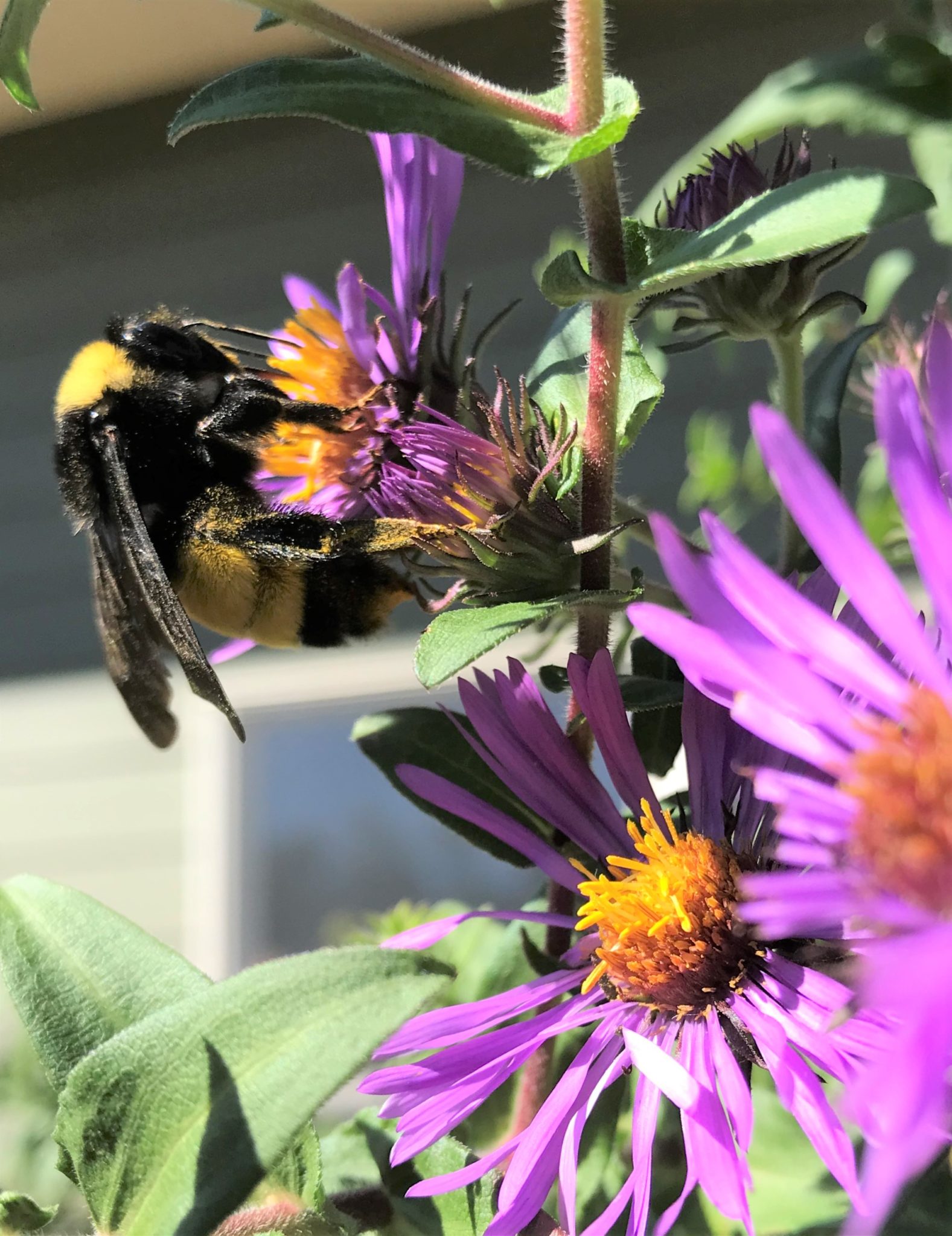
A friend and I recently braved high heat, oppressive humidity, ticks and sunburn — not to mention the potential for bee stings–to catch, photograph and identify (and then release) bumble bees in central Missouri. After about three hours of that, I returned to my air conditioned home and spent at least three hours sorting our photos and uploading our data for the Missouri Bumble Bee Atlas project. This was in addition to a day-long training and lots of planning.
And I was happy to do it!

What’s so special about bumble bees? you ask.
In recent years, there’s been a lot of concern about populations of pollinators, the insects, birds and bats that transfer pollen from one flower to another. Pollination is necessary for plants to generate seeds. Some plants can be pollinated by the wind, like corn and ragweed, but many or most need a little help. Animals that visit flowers (usually for nectar) get dusted with pollen which is then carried on to the next flower. This process is important for many commercial crop plants but also the wild native plants that are essential to our native ecosystems.
Bees in general have garnered a lot of attention in the last ten or more years with concerns about the colony collapse disorder–which only affects honey bees. Honey bees are good pollinators. They visit a lot of flowers. BUT they are not as good as bumble bees, and here’s why.
First, honey bees are not native to North America (they come from Europe). Secondly, honey bees are primarily in search of nectar not pollen.
Bumble bees are native species that have evolved with the local plants. Bumble bees focus more on collecting pollen, so they are really good at inadvertently carrying pollen between flowers. Thirdly, some plants can only be pollinated effectively by bumble bees, which use a special buzzing technique to get these flowers to release pollen.
Because of bumble bees’ ecological importance, organizations like Xerces Society, Quail Forever, Pheasants Forever, MU and the MDC have come together to support the Missouri Bumble Bee Atlas, a citizen science project working to identify the bumble bee species in Missouri. There are concurrent efforts in Canada and many other states. The data from this project and other bumble bee monitoring projects is collected and housed on the Bumble Bee Watch website, which is open to the public.

Bumble bees are important to our ecosystems, and that’s part of why I’m participating in the Atlas project. I find a beauty in how they fit into Missouri’s landscape. Our bumble bees need the flowers, but the flowers also need them. Bumble bees have personality. You might call them a charismatic mega fauna of insects. They are big (for a bee), furry and relatively docile. Case in point, no one got stung in the process of catching, photographing and releasing 24 bees! They are so focused on their work collecting pollen and nectar that they are embarrassingly easy to catch. Just stay away from their nests.
Other interesting things about bumble bees. Only the females can sting, but unlike honey bees, they can sting repeatedly. They are most likely to sting you if they are defending their nest or in imminent danger, like getting stepped on. In Missouri, bumble bees are the only native bees that nest communally. In the spring, bumble bee queens emerge from whatever cozy spot they found to over winter, breed with a male and then start a nest. At the end of the summer the new queens emerge, and fatten up before settling in somewhere for the winter. The nest is only used for one year. The queen and her workers don’t see another season.
If you think bumble bees might be great, here are some things you can do:
- Take a look at these materials to learn more about bumble bees;
- Visit Bumble Bee Watch to see what species of bees have been collected in your area and elsewhere;
- Plant native flowers. If there are flowers for them, bumble bees will miraculously show up and do their thing;
- Volunteer as a citizen scientist with Missouri Bumble Bee Atlas;
- Visit the Missouri Bumble Bee Atlas website and peruse their educational resources. They have videos and documents about pollinators, identifying bumble bees, why populations are declining and more;
- Leave some piles of grass, brush or other ‘messy’ areas where bumble bees might like to nest;
- Don’t use insecticides in your garden;
- Buy your plants and seeds from plant nurseries that do not use insecticides Some insecticides are very persistent and can even be transferred to the seed and the new plant that grows from the seed. You’ll have to ask the seller what the policy is. If they don’t know, recommend they find out, and look for plants elsewhere.
- Tell other people to watch out for the bees! We need them!



